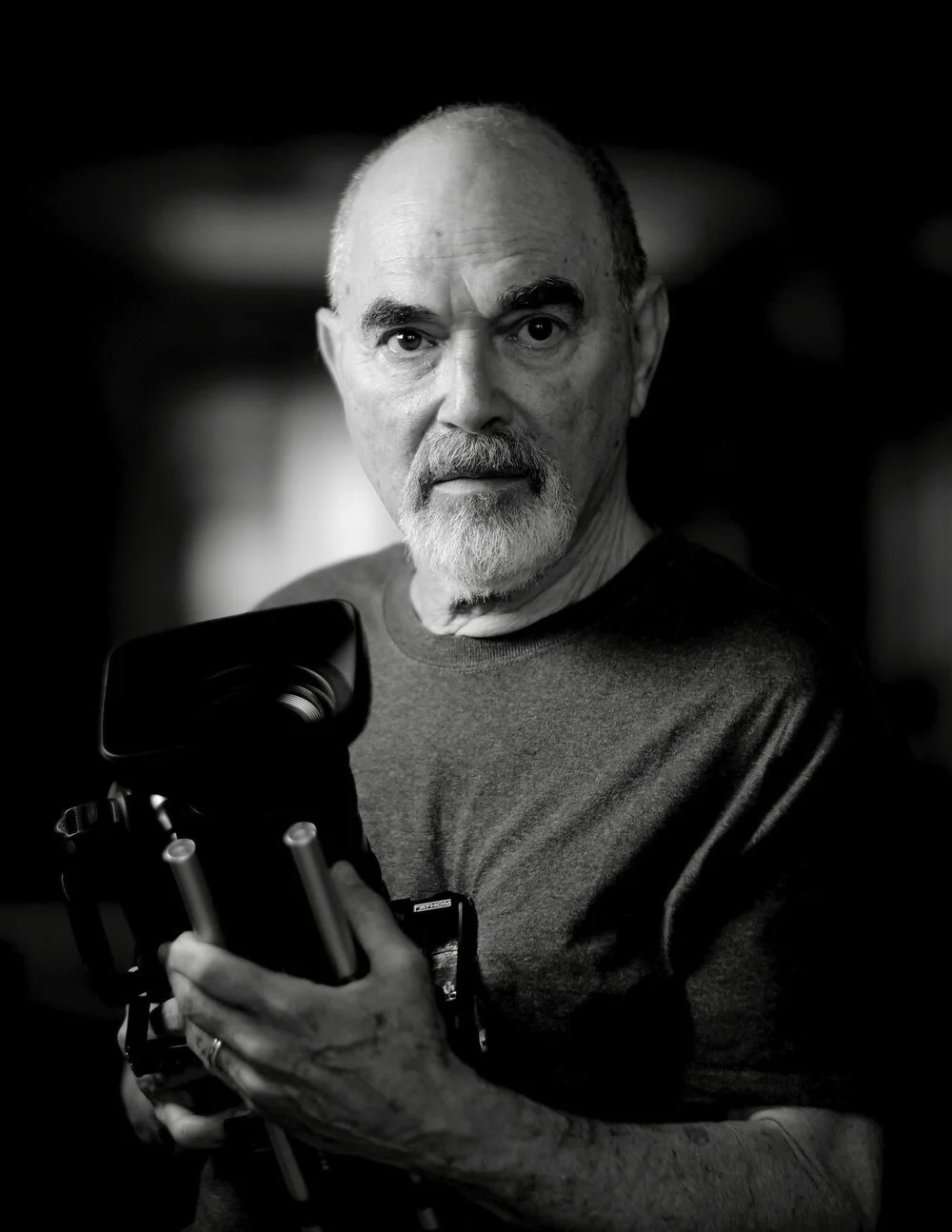From Our Archives: Mark Benjamin: Overboard
Sam Sielen, Mark Benjamin.
Belle McIntyre. What drove you as a filmmaker to focus on oceans and marine life?
Mark Benjamin. I grew up on Biscayne Bay in Miami. As a kid, I was spearfishing all the time. Small-boat, free-diving trips out to the shallow reef was a boy’s dream life. The bountiful ocean was a source of wonder for me. Growing up and seeing the human pressure on fish and the collapse of fisheries globally is disturbing, not to mention the devastating unbalance of the delicate ocean ecosystem. This compelled me to make marine conservation films.
Belle. Wow, that’s intriguing that your interest started very young. Can you give us a bit about your professional history?
Mark. I began my filmmaking career as a combat cameraman in the Sinai Desert in 1973 for NBC News. You can never unsee the violence of war and death. I don’t look back on that without disgust at mankind’s barbarism. It wasn’t the place for me.
Belle. I can only imagine. You had some early mentors who influenced you and guided your trajectory. Can you describe them and your collaboration?
Mark. Al Levin was my good friend and collaborator, and he was Bill Moyers’ first producer. We did many documentaries together in the ’80s and ’90s. Bill sent me to Watts in 1980 to investigate urban violence. That started a trend that went on for decades. I’ll never forget the words of the legendary TV executive Fred Friendly, Edward R. Murrow’s producer and head of the news division at CBS. He told us, “Put those cameras on your shoulders and go out there and slay the dragons. That is what cameras are for.”
Belle. You have been making documentaries for your whole life. Tell us about your latest project, which is really making a lot of waves.
Simon Ager / Sea Shepard, Bridge Crew group portrai
Mark. My most recent feature film, Chasing the Thunder, is a remarkable, terrifying, and inspiring eco-thriller about the immense damage to our oceans caused by out-of-control, illegal fishing on an industrial level perpetuated by brazen international poachers. Poaching is a high-stakes criminal enterprise. And the film is a high-seas documentary about the Sea Shepherd’s epic, 110-day, 10,000-mile chase of the Thunder, a ship considered the world’s most notorious poaching vessel. Across two seas and three oceans, the marine activists hunted the fugitive fishing ship through massive ice floes, storm-tossed seas, a near collision, and violent clashes until the Thunder dramatically sank, burying the evidence of its crimes on the bottom of the South Atlantic.
Belle. Can you briefly describe Sea Shepherd and its impact on the oceans?
Mark. Sea Shepherd Conservation Society, founded by Greenpeace co-founder Paul Watson, is the only ‘boots on the deck’ NGO example for poorer international governments and navies on how to protect their EEZ (exclusive economic zone) from poachers stealing their fish. If governments did this enforcement, Sea Shepherd would not need to. Interpol, who monitors these things applauds Sea Shepherd for these direct actions.
Simon Ager / Sea Shepard, Near Collision with Vessel Thunder.
Belle. What attracted you to this particular story as a vehicle to illustrate the plight of the oceans?
Mark. We have to entertain while we teach. Documentary filmmakers need to take our cameras to the ocean and go after the bad guys. That is our job. I have long believed that legal industrial overfishing is an environmental crime. This film allowed us to show the illegal fishing nightmare unfolding in real time.
Belle. Your approach is unusual for an environmental documentary. Can you share your thinking?
Mark. Serving ocean conservation as high-seas, blue-water entertainment and not medicine is my approach. It is the only way to get eyeballs on this ocean that needs friends. I try to move the margins of a conservation film over some to make room for the eco-thriller living in the footage. One cannot usually do this with non-fiction. But the Thunder footage gave us that option. We had a rare thing—‘never blinking’ footage with granular coverage on two ships from the 100 days at sea.
For the full version of Mark Benjamin’s interview, check out ISSUE NO. 22 - IMPACT










